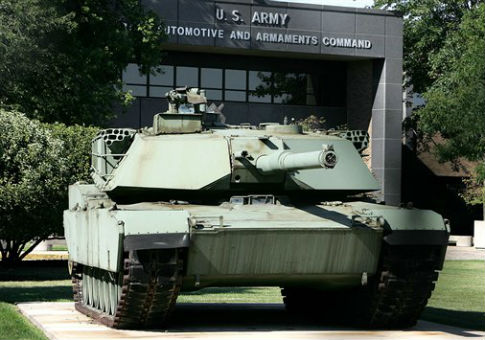The United States military does not currently have the ability to fight two major wars simultaneously, according to a new report, a significant reduction from the capacity enjoyed by defense officials for decades.
The Heritage Foundation’s "2015 Index of U.S. Military Strength" concludes that the armed forces "would be ill-equipped to handle two, near-simultaneous major regional contingencies (MRC)." The two-MRC goal was largely attained during the Cold War, when U.S. forces engaged in a conflict every 15 to 20 years while maintaining ground forces in other regions to ensure stability and deter aggressors.
That strategy enables the U.S. military to defeat one adversary in a conflict while preventing another aggressor—seeking to take advantage of the United States’ preoccupation with the first conflict—from defeating it in a separate theater.
But this strategy is no longer feasible, according to the report.
"The consistent decline in funding and the consequent shrinking of the force are putting it under significant pressure," the report said. "Essential maintenance is being deferred; fewer units (mostly the Navy’s platforms and the Special Operations Forces community) are being cycled through operational deployments more often and for longer periods; and old equipment is being extended while programmed replacements are problematic."
"The cumulative effect of such factors has resulted in a U.S. military that is marginally able to meet the demands of defending America’s vital national interests."
If current automatic budget cuts remain in place, nearly $1 trillion will be slashed from the Defense Department’s funding in the next decade. Almost all of the service branches are already in "marginal" condition, according to the report.
The Army only had 12 brigade combat teams (BCT) ready for action at the end of last year, while the Obama administration’s last major defense review in 2010 called for 45 active BCTs. The Navy is 24 ships short of the total fleet it recommended to Congress in January 2013. And the Marine Corps could shrink from 188,800 active personnel last year to 175,000 by 2017, increasing deployment frequency for troops that have had less time to train.
The report said the Air Force was in the best relative condition of the services.
The size and readiness of the U.S. armed forces are declining during a period of global instability not seen since the Cold War. The report said the threats to U.S. vital interests are "elevated" from Iran, Middle East terrorism, and North Korea.
The threat levels are even higher from Russia and China, according to the think tank. Russia "possesses the largest nuclear weapons arsenal among the nuclear powers (when short-range nuclear weapons are included)" and has demonstrated a willingness to harm U.S. allies in Europe—as evidenced by its ongoing destabilization of Ukraine. China has been modernizing its nuclear and conventional forces in recent years and "is taking increasingly assertive steps to secure its own interests in [the Asia-Pacific region] independent of U.S. efforts to maintain freedom of the commons for all."
The report also expressed concerns about the state of U.S. nuclear forces. Defense officials are not developing any new nuclear warheads, and weapons and delivery vehicles are not replaced for long periods—heightening the risk of failure.
"Nearly every other nuclear power is carrying out a modernization program that involves warhead and delivery system upgrades," the report said.
The Heritage military index, released for the first time this year, will serve as a "baseline" for assessing U.S. defenses in the future, the think tank said. Presidential administrations, the Pentagon, and the services release several reports periodically on defense strategy and posture but lack a consistent measure for grading the armed forces, according to the Heritage report.
